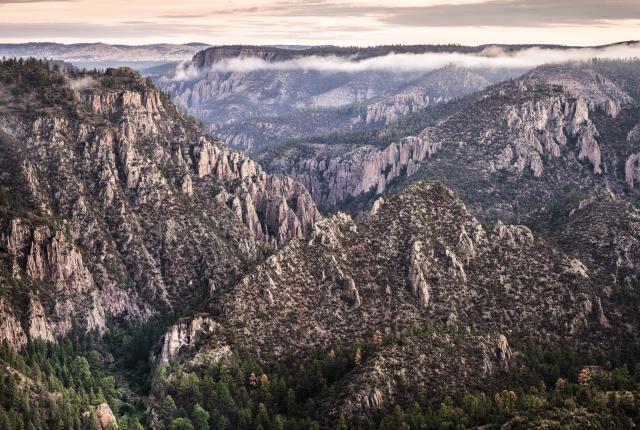ON JUNE 3, 1924, THE GILA WILDERNESS became the first-of-its-kind wilderness area—a federally designated place with no roads, no cabins, no vehicles. Or, as Aldo Leopold—the Forest Service employee whose experience with the wonders of the Gila shaped the original vision—argued in a 1921 essay: “By ‘wilderness,’ I mean a continuous stretch of country preserved in its natural state.”
Leopold’s ideals helped shape the Wilderness Act of 1964. Today, there are more than 800 wilderness areas encompassing more than 111 million acres throughout the country that fall under its purview. So, in preparation of the 100th anniversary, we set out to explore a tiny sliver of the Gila’s 558,014 acres, find ways you can connect with it, and meet folks who love and care for this place.
What I quickly learned from this month’s “Wild at Heart” cover story, however, is to appreciate the beautiful richness and complexity of this region forged from super volcanos some 40 million years ago. As Luke Koenig, grassroots organizer for the New Mexico Wilderness Alliance, says: “The more you get to know [the Gila Wilderness], the bigger it becomes. Around every corner is a whole world unto itself.”
A landscape that sometimes gets described as inhospitable is home to elk, black bear, deer, and javelina, as well as endangered species like the Mexican gray wolf, Gila trout, Chiricahua leopard frog, and southwestern willow flycatcher.
Moreover, for centuries before Leopold arrived, the Gila was a place where Indigenous people flourished in harmony with the land. “We were created here and gifted the responsibility to protect it,” says Chiricahua Apache guide Joe Saenz.
When my wife and I spent a September weekend visiting Silver City, the Catwalk Recreation Area, and the ghost town of Mogollon, we just skirted the edges of the wilderness area, taking in its rugged expanse from winding mountain roads. I’m looking forward to a return trip with my fly-fishing gear in the hopes of landing a native Gila trout, even if I’m unlikely to be up to the task—either as an angler or outdoorsman.
Still, I feel the attraction to this place and the mysteries it holds. Just as it served as a blueprint for what conservation could look like in 1924, the Gila can provide inspiration for us now in the face of a climate crisis that threatens all that we hold dear—if we just listen to what the land is telling us.



